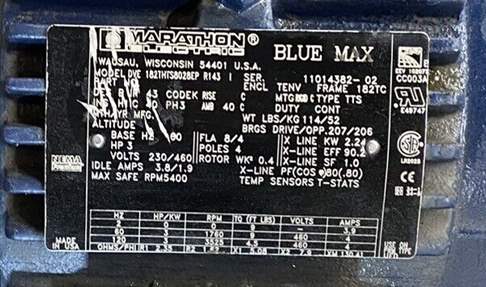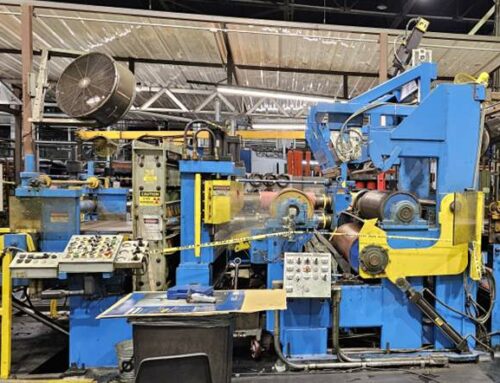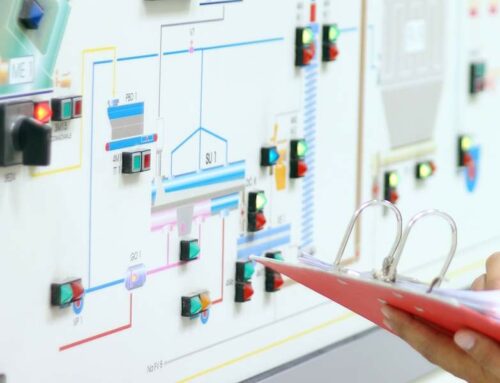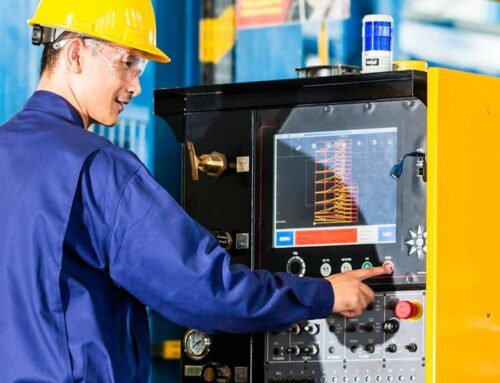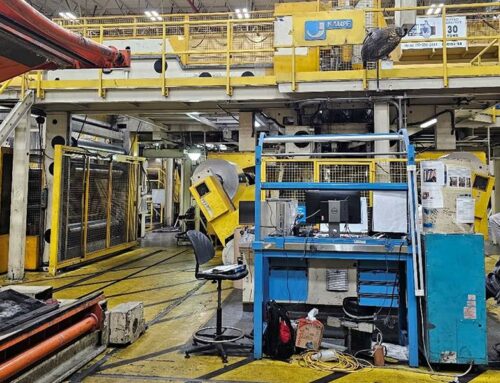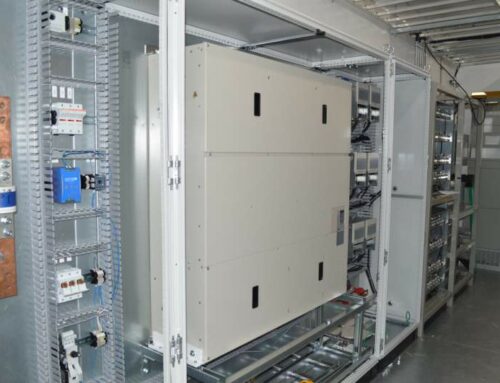Base Speed and Horsepower
You will sometimes hear it said that a DC motor HP is stronger than an AC motor. Strictly speaking, this is not true. Engineers need to be wary of the fact that DC motors often have base speeds lower than 1800 rpm, whereas AC motors are typically 1800. AC motors may also have base speeds lower than 1800; however, this is most common on older DC motors. Engineers sometimes make the mistake of only looking at the HP without consideration for base speed.
If we remember from school, Power = Torque X Speed. A good rule of thumb is that an 1800 rpm motor has approximately 3 ft-lbs. of torque per HP. However, DC motors, particularly on center winder systems (more on that in a minute), often had lower base speeds of 600 rpm or less. A 600 rpm motor will have 3 times as much torque at or below base speed as an 1800 rpm motor of the same horsepower. This is a very important consideration when running low line speeds or sizing a center winder.
Below base speed, motors operate in a constant torque speed range. Torque is constant as speed increases up to the base speed. Above base speed, motors operate in a constant horsepower range where torque decreases as speed increases.
On a center winder, rpms decrease as diameter increases (for a constant line speed). Torque increases, however, since torque = tension X radius. Therefore, low base speed motors offer an advantage in this environment. Using a lower base speed motor, you can often use a variable speed drive that is 1/2 or 1/3 the size of what might be required using a standard motor. It should be noted, however, lower base speed motors are much bigger and more expensive than standard base speed motors. The savings typically come in the cost of the variable speed drive used. It’s important to keep that in mind as well.
Practical Center Wind Example
(Ignoring friction considerations and safety factor for simplicity)
- Winder: 6” Core, 30” Max Diameter
- Tension: 100 lbs.
- Line speed: 300 fpm
AC Motor 1800 RPM Base Speed Motor Sizing
- At 6” core, we have 1.57 feet (6*pi/12) with every rotation of the roll.
- At 300 fpm, we need 191 rpm (300/1.57).
- With an 1800 rpm motor (if we don’t wish to overspeed), we could use an approximate 9:1 gear ratio (1800/191).
- The torque requirement is based on the max diameter (worst case condition). 15” radius/12” (inches/ft) *100 lbs. of tension = requirement of 125 ft-lbs. of torque.
- In this scenario, we need an AC motor with (125 ft-lbs. torque/9 gearbox ratio) = 13.89 ft-lbs. required of motor
A 3 HP motor only has 9 ft-lbs, so we would go to the next standard size of 5 HP.
DC Motor 600 RPM Base Speed Motor Sizing
- Using a 600 rpm base speed DC motor, we could still run the motor up to 1800 rpm (in the constant HP region).
- At or below 600 rpm, we have 9 ft-lbs. of torque per horsepower.
- A 2 HP, 600 rpm base speed DC motor has 18 ft-lbs. of torque at or below 600 rpm.
- At the high rpm required at core (6”), we only need .25’ (radius in feet) X 100 lbs. = 25-ft-lbs of torque.
- The 2 HP, 600 RPM DC motor still has 6 ft-lbs. of torque when operating near 1800 rpm (above 600 rpm it is operating in the constant HP range; therefore, if it has 9 ft-lbs. of torque/hp at 600 rpm, it will have 3 ft-lbs. of torque at 1800 rpm)
- 6 ft-lbs. X 9:1 ratio = 54 ft-lbs. of torque available (vs 25 required).
- At max diameter of 30” (pi*D = 7.85 ft/rev), the motor will only need to run (300/7.85 *9) = 300 fpm/ (30” *3.1415/12”/ft) = 344 rpm.
- Since 344 rpm is below the motor base speed of 600, it will have full torque available at this diameter. So, we will have 18 ft-lbs. * 9 = 162 ft-lbs. vs the requirement of 125 ft-lbs. previously calculated.
Two conclusions:
- In this scenario, the lower base speed motor allows a smaller HP drive (2 HP)
- It also means if you replace a 2 HP DC motor with a 2 HP AC motor and don’t verify base speeds, there is a very good chance you could have a problem.
Note For Non-Center Wind Machines
The example provided was for a center wind application where torque requirement decreases with increasing speeds. However, the concept holds true for machines where multiple, different products might run. On such a machine it would be possible to run higher tensions at lower speeds and lighter tensions at faster speeds, if desired.
Another Important Point for Consideration:
One final note in terms of DC vs AC control is the fact that DC drives were inherently good torque regulators. They were good torque regulators whether they had an encoder or not. AC drives are often not nearly as accurate in torque control if they don’t have an encoder. Don’t assume that your open loop DC drive operating in torque limit can be replaced by an open loop AC drive with no encoder. This will often cause a problem. At a minimum, verify with the manufacturer the capabilities of the drive doing the control and make sure you have a good handle on the degree of torque precision required for your application.
Contact us at M.R. Snyder Company to learn more about our drive systems. We can help you upgrade your current infrastructure or integrate an all new system.
Old DC Motor Nameplate
Note the 300 RPM (that is the base speed of this motor)
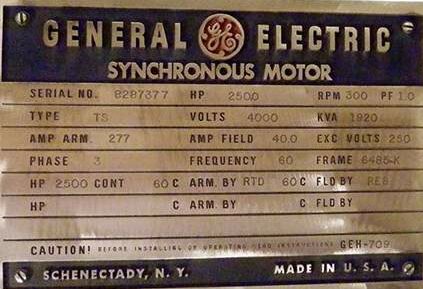
AC Motor Nameplate
(Synchronous RPM is 1800, shows with slip at 1760 RPM at 60 Hz)
